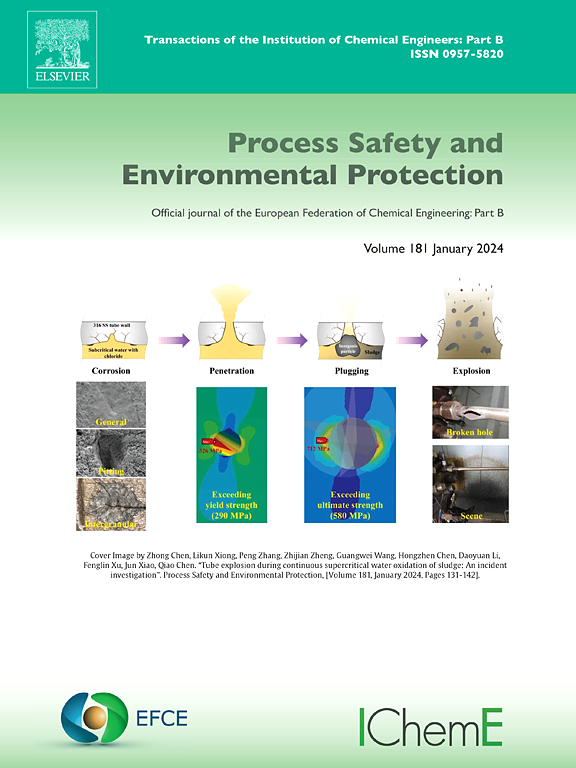PM2.5 separation efficiency and energy assessment for cleanable dust- and oil-water soluble mist filter media
IF 6.9
2区 环境科学与生态学
Q1 ENGINEERING, CHEMICAL
引用次数: 0
Abstract
In connection with rising energy prices have brought the energy consumption of air filters and their ability to separate fine PM2.5 particles into focus. For high particle concentrations, cleanable filters are in use, like cleanable dust filters and cooling lubricant oil-water mist filters. These two filter systems have similarities due to their rapid filter media clogging. The most expensive part of the cleanable filter is the filter medium itself. Latter will be tested by using corresponding test standards. For assessing these test results, the well-known quality factor QF is proposed. This includes the PM2.5 separation efficiency and the pressure drop with its unit [Pa]. As the SI unit [Pa] can be set equal to the SI unit [J/m3], the pressure drop term can be replaced by a so-called equivalent pressure drop, in which the filtration pressure can be added together with all other used energy parts. For the case of cleanable dust filter, the cleaning energy could be then included in the quality factor calculation. Filter test series executed on the VDI3926, ISO110572011 standard and quality factor evaluation without and with including the cleaning energy showed that the latter plays an essential role for filter media assessment. Other tests, using the quality factor evaluation showed, that different filter media assessments occur when the separation of PM2.5 or PM10 particles is the separation goal. In case of qualifying cooling liquid mist filters, the droplets to be separated consist of a mixture of water and oil, whereby only the oil content is of interest within the PM2.5 particle separation. A suitable measuring method has been developed for this purpose, which can determine the harmful PM2.5 oil content separation efficiency from the PM2.5 droplet separation efficiency. Tests using the corresponding standard ÖNORMZ1263 and this special PM2.5 oil content separation measurement technique were executed and a quality factor assessment for a series of different cooling liquid mist filter media is shown.
求助全文
约1分钟内获得全文
求助全文
来源期刊

Process Safety and Environmental Protection
环境科学-工程:化工
CiteScore
11.40
自引率
15.40%
发文量
929
审稿时长
8.0 months
期刊介绍:
The Process Safety and Environmental Protection (PSEP) journal is a leading international publication that focuses on the publication of high-quality, original research papers in the field of engineering, specifically those related to the safety of industrial processes and environmental protection. The journal encourages submissions that present new developments in safety and environmental aspects, particularly those that show how research findings can be applied in process engineering design and practice.
PSEP is particularly interested in research that brings fresh perspectives to established engineering principles, identifies unsolved problems, or suggests directions for future research. The journal also values contributions that push the boundaries of traditional engineering and welcomes multidisciplinary papers.
PSEP's articles are abstracted and indexed by a range of databases and services, which helps to ensure that the journal's research is accessible and recognized in the academic and professional communities. These databases include ANTE, Chemical Abstracts, Chemical Hazards in Industry, Current Contents, Elsevier Engineering Information database, Pascal Francis, Web of Science, Scopus, Engineering Information Database EnCompass LIT (Elsevier), and INSPEC. This wide coverage facilitates the dissemination of the journal's content to a global audience interested in process safety and environmental engineering.
 求助内容:
求助内容: 应助结果提醒方式:
应助结果提醒方式:


